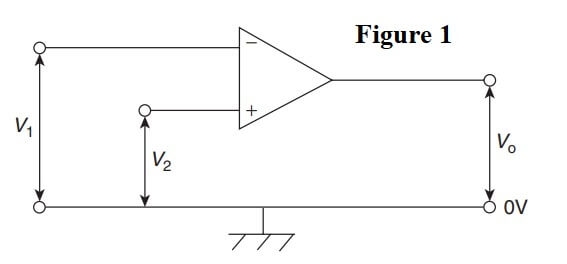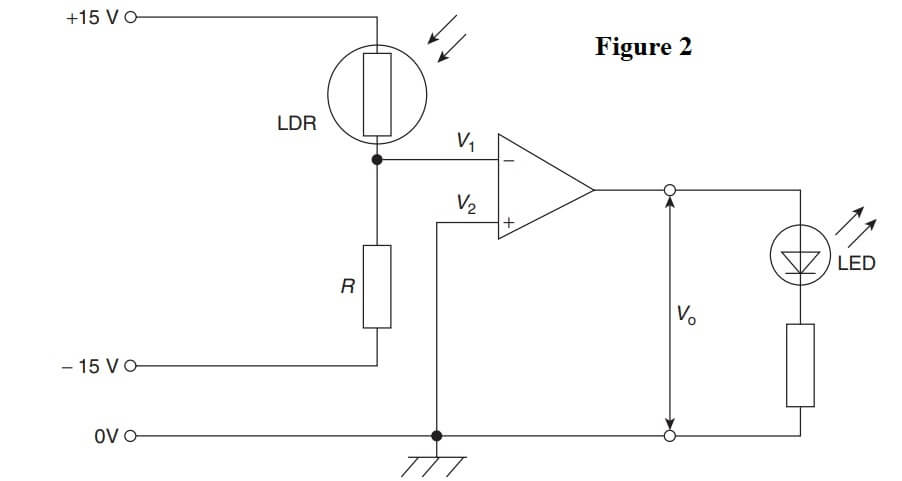If both inputs of the op amp shown in Fig. 1 are used simultaneously, then from equation, the output voltage is given by:
Vo = Ao(V2 − V1)

When V2 > V1 then Vo is positive, its maximum value being the positive supply voltage + Vs, which it has when (V2 > V1) ≥ Vs/Ao. The op amp is then saturated. For example, if Vs = +9 V and Ao = 105, then saturation occurs when
![]()
i.e. when V2 exceeds V1 by 90 μV and Vo ≈ 9 V. When V1 > V2, then Vo is negative and saturation occurs if V1 exceeds V2 by Vs/Ao i.e. around 90 μV in the above example; in this case, Vo ≈ −Vs = −9 V.

A small change in (V2 − V1) therefore causes Vo to switch between near +Vs and near to −Vs and enables the op amp to indicate when V2 is greater or less than V1, i.e. to act as a differential amplifier and compare two voltages. It does this in an electronic digital voltmeter.
| Read More Topics |
| Introduction to operational amplifiers |
| Maximum power transfer theorem |
| Conduction in semiconductor materials |
| Introduction to electromagnetic induction |





